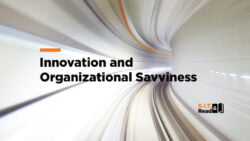This blog marks its 10th anniversary this year.
“For last year’s words belong to last year’s language
and next year’s words await another voice.”
T.S. Eliot
In 2013 (2023), think inside the box and give your staff these precious gifts to drive innovation forward:
1. Give them Hope: Hope is defined as a positive motivational belief in one’s future; the feeling that what is wanted can be had; that events will turn out for the best. Without hope, tasks such as innovating become difficult if not impossible. Researcher Armenio Rego says, “Hope is important for innovation at work because creativity requires challenging the status quo and a willingness to try and possibly fail. It requires some level of internal, sustaining force that pushes individuals to persevere in the face of challenges inherent to creative work.”
2. Give them Voice: Giving your employees a voice in matters boosts their creativity. Research shows that, over time, procedural fairness (giving people the opportunity to express their views) has a positive maintaining effect on creativity whereas stifling their views decreases creativity. Be consistent over time. Don’t let distractions or a crisis cause you to change the rules. Give them a chance to speak about anything related to the innovation challenges you face – focus, methodology, budget allocation, team formation, and so on. Most importantly, let them speak about the nature and value of their own ideas.
3. Give them a chance to Get Even: When managing individuals or teams, the time will come when you have to say ‘no’. In that moment immediately after rejecting a person’s viewpoint, you want to let it sink. Don’t try to minimize the impact by rationalizing the decision or by other means of making the person feel better. Assign the rejected person right away to a new and important task. Put them on a project where they can prove themselves and “get even.” Let their creative juices flow.
4. Give them Accountability: Hold people accountable for what they do to improve innovation activities. It is tempting to judge employee performance and reward them for innovation output. This leads to the unwanted rivalry between employees. Avoid this trap by looking at how managers set up “cockpit indicators” and use those indicators to make changes. Have they created a closed loop feedback process to improve innovation continuously?
5. Give them a Method: For thousands of years, inventors have embedded five simple patterns into their inventions, usually without knowing it. These patterns are the “DNA” of products that can be extracted and applied to any product or service to create new-to-the-world innovations. Systematic Inventive Thinking (SIT) is an effective, repeatable, and trainable innovation process for organic growth.
6. Give them Constraints: Research in cognitive psychology confirms that creativity is enhanced by constraints, not freedom. By limiting the number of variables under consideration from infinity to a finite number, we amplify our potential to come up with a creative solution. To throw away all constraints would be to destroy the capacity for creative thinking. It may sound counterintuitive, but giving employees too much freedom of thought leads to “idea anarchy” and a poor level of inventiveness.
7. Give them Skills: Innovation is a skill, not a gift. It can be learned by anyone regardless of where they are on the creativity scale. If you want a more innovative company, you must have more innovative employees. Train them in innovation as you would train other skill such as leadership, six sigma, or business ethics.
8. Give them Teams: Innovating takes teamwork. Properly selected teams using a facilitated systematic method will outperform ad hoc teams using divergent, less structured methods such as brainstorming. Create innovation “dream teams” with diverse talent from the commercial, technical, and customer-oriented parts of your business.
9. Give them Strategy: Innovation that is linked to strategy is seen as more realistic and supportable. Innovating is efficient because you avoid creating ideas that are out of scope. Companies get better results from innovation by targeting initiatives at the right places.
10. Give them an Innovation Culture: An innovative corporate culture is one that supports the creation of new ideas and the implementation of those ideas. Leaders need to help employees see innovation in the right light and create support systems to make it stick. As fellow blogger Jeffrey Phillips notes, “A culture that sustains and supports innovation is one that encourages reasonable risk and uncertainty in the goal of larger, more profitable products and services.”








